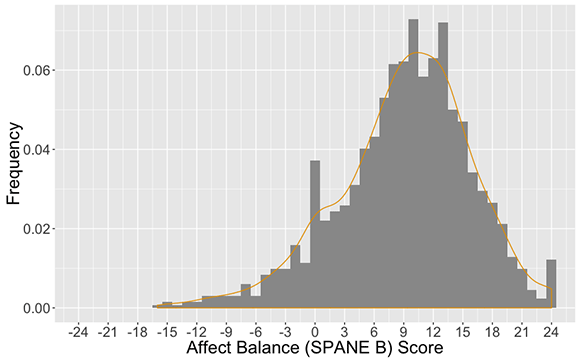Ten main reasons that make a programmer unhappy

Developer Happiness (balanced index on the scale of positive and negative experience)
Some Silicon Valley companies and start-up start-ups are spending a lot of money to keep their employees happy. Recently it has become a common place and a kind of trend: free food, gym, massage at the workplace. Of course, companies do this not for the sake of caring for people, but to increase their own profits. Previous studies have shown that employee productivity increases if he is happier. This is especially true for intellectual workers, such as software engineers. In this regard, it is important for companies to find out what causes affect the level of happiness, and what, on the contrary, causes dissatisfaction among programmers.
According to the survey results published in March 2017, software developers are, on average, “slightly happy”. A positive index is good news for employers. So, the efforts of the companies were not in vain. But they still have to strive for. Researchers have compiled a list of the main reasons for programmer dissatisfaction — these factors should preferably be kept to a minimum.
General categories of external causes of discontent
| Main category | Subcategories |
|---|---|
| People (416) | colleagues (206) manager (122) user (49) |
| Artifacts and working with artifacts | code and programming (217) bugs and bug fixes (194) technical infrastructure (151) requirements (99) |
| Process-related factors (544) | no subcategories |
| Other reasons (95) | no subcategories |
For the survey, the researchers chose the most relevant scale of positive and negative experiences (Scale of Positive and Negative Experience, SPANE), which involves a quantitative assessment of positive and negative cases over the past four weeks. As previous studies have shown, the SPANE scale is able to objectively reflect the positive and negative influence of factors (that is, happiness), regardless of the source, level of mental activation, and cultural context. The scale provides good psychometric characteristics (validity and reliability), which has been empirically shown in at least seven previous experiments.
')
In fact, the SPANE scale consists of 12 elements, which are divided into subcategories of positive (SPANE-P) and negative (SPANE-N) experience. In each of them, you can choose the answer from 1 (very rarely or never) to 5 (very often or always). Accordingly, SPANE-P and SPANE-N as the sum of responses take a value from 6 to 30. Then these ratings are combined to calculate a balanced index on a scale of positive and negative experience (SPANE-B). The SPANE-B index can range from −24 to +24. The distribution of results by the total of 1318 developers survey is shown in the diagram above. The average value of the happiness index for programmers is +9.05. The minimum indicator for one developer is −16, the maximum is +24.
Specialists from 88 countries took part in the survey. Most often, workers from the USA (24%), India (6%), Brazil (6%) and Russia (5%) answered. Among the respondents, 993 people work professionally as programmers, another 15% are students, the remaining 10% have other professions - manager, executive director, technical director, scientist, etc. But in general, the survey can be considered quite representative: the average software development experience of the respondents is 8.29 years, according to the median - 5 years.
In addition to calculating the “happiness index,” scientists conducted an additional survey with open-ended questions to find out the specific reasons for programmer dissatisfaction. General categories of external causes of dissatisfaction are shown in the table above. External causes of dissatisfaction (1843 cases) are four times more common than internal causes (437) associated with the mental state or the programmers' own behavior. Internal causes are divided into 22 internal factors that do not demonstrate a clear structure. On the other hand, external causes are quite clearly divided into the categories given in the upper table.
But the most interesting is the ten most frequent specific reasons that make programmers unhappy.
| Cause | Category | Frequency |
|---|---|---|
| Stuck in problem solving | own condition | 186 |
| Lack of time | external causes → process | 152 |
| Poor quality code and programming practice | external causes → artifacts and work with artifacts → code and programming | 107 |
| Undemanding colleague | external causes → people → colleagues | 71 |
| Feeling of inconsistency work | own condition | 63 |
| Routine or repetitive task | external causes → process | 60 |
| Unexplained error in code | external causes → artifacts and work with artifacts → code and programming | 57 |
| Bad decision making | external causes → process | 42 |
| Development restrictions imposed | external causes → artifacts and work with artifacts → technical infrastructure | 40 |
| Personal issues not related to work | own condition | 39 |
As you can see, the results of the survey are quite eloquent. Who can say that he has never encountered these problems?
From the point of view of the company, it is hardly possible to help employees in solving internal problems related to their own condition, except with the help of a psychologist. But some external causes of stress can be completely eliminated. The most important reasons - getting stuck in solving a problem and lack of time - are likely to be solved. “In this study, we showed that discontent is present, it is caused by various factors, some of which can be easily prevented,” said Daniel Graziotin from the Institute of Software Technologies at the University of Stuttgart, the lead author of the scientific work.
The scientific article was published on March 15, 2017 on the site arXiv.org (arXiv: 1703.04993v1).
Source: https://habr.com/ru/post/326916/
All Articles